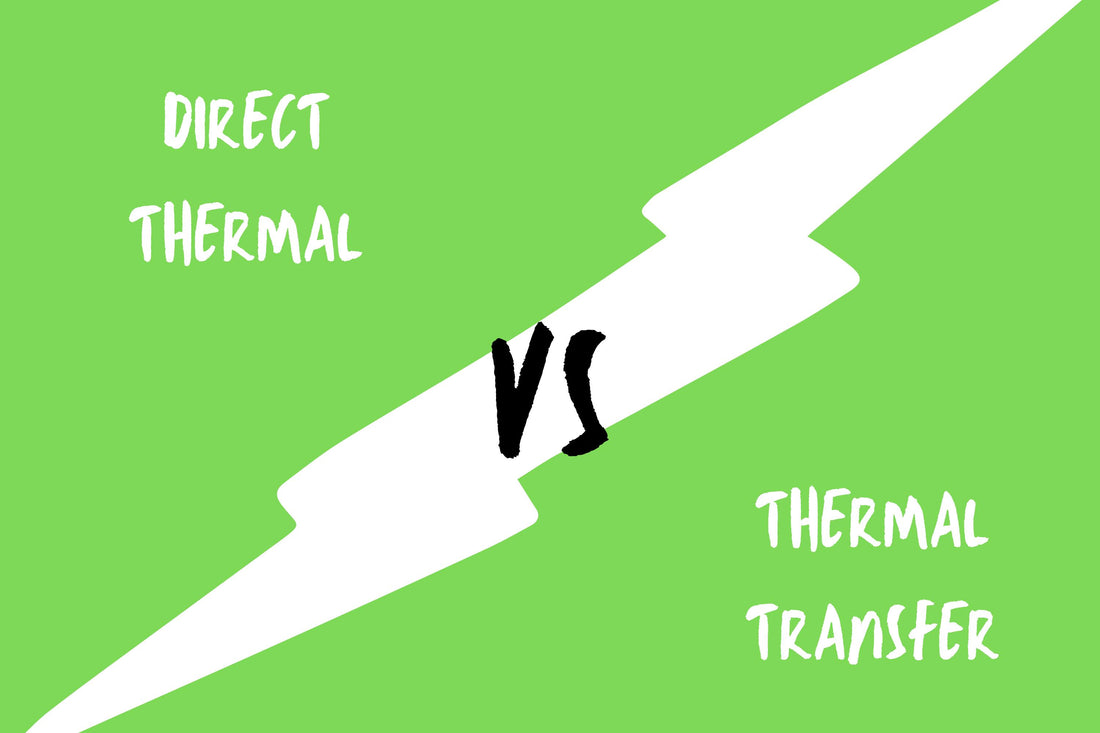Looking for the difference between direct thermal and thermal transfer labels? In this short article we'll explain how they're different and when it's best to go with one over the other.
Direct Thermal
Direct thermal, DT for short, is a print technology that relies on a heat-sensitive label to produce the desired print. A DT printer is equipped with a thermal printhead that applies heat to the label as it exits the machine. The heat "activates" the chemically-treated label which blackens the necessary spots to produce your image. DT printing is known for its simplicity as it doesn't require any other components in order to perform.
Direct thermal printing is considered to be less durable than thermal transfer printing because of the material. Since the material is heat-sensitive, exposure to the elements can cause fading over time. Additionally, direct thermal material is also susceptible to scratching or damage from water and other liquids. All these reasons relegate DT labels to short-term applications (less than six months) where longevity is not required.
Thermal Transfer
Thermal transfer printing uses a similar technology to direct thermal however, rather than applying heat directly to the material, the printhead applies heat to a film known as a ribbon which is melted onto the label forming the image. The ink from the ribbon absorbs into the material making it scratch, heat, and moisture resistant. Thermal transfer printing is more durable and long-lasting than direct thermal printing however, it does require additional complexity. A ribbon is needed in order to print and the ribbon and label material must be "compatible" to ensure high quality, consistent results.
Knowing how these labels are designed makes it easy to determine what applications they are best suited for. For any indoor identification or labeling that doesn't require long-term use, direct thermal is best (e.g. shipping labels, meat department, name tags, etc). Any label that will be exposed to harsh temperatures or conditions should ideally be thermal transfer (freezer storage, product labels, outdoor applications).

